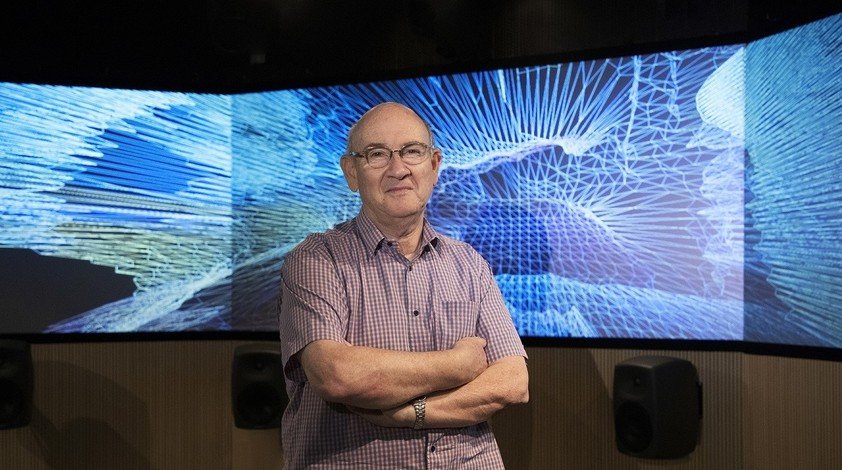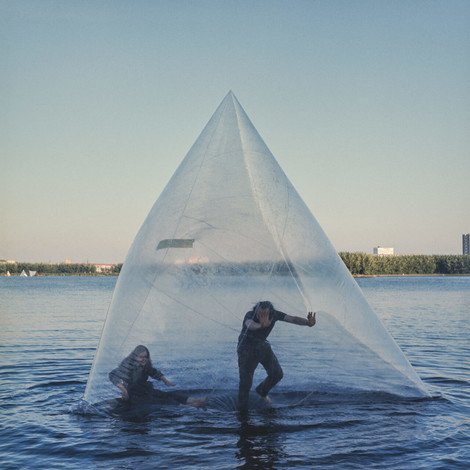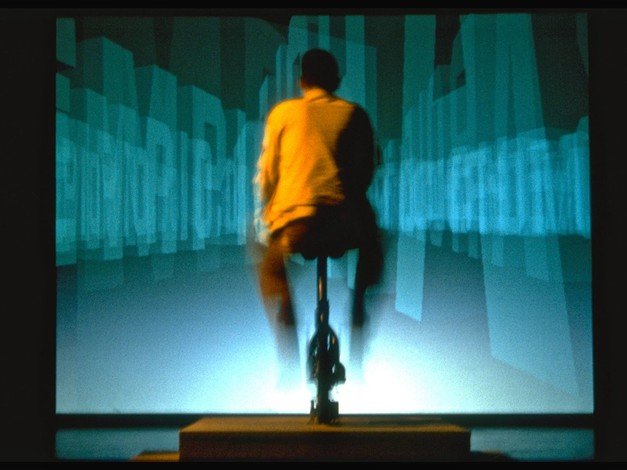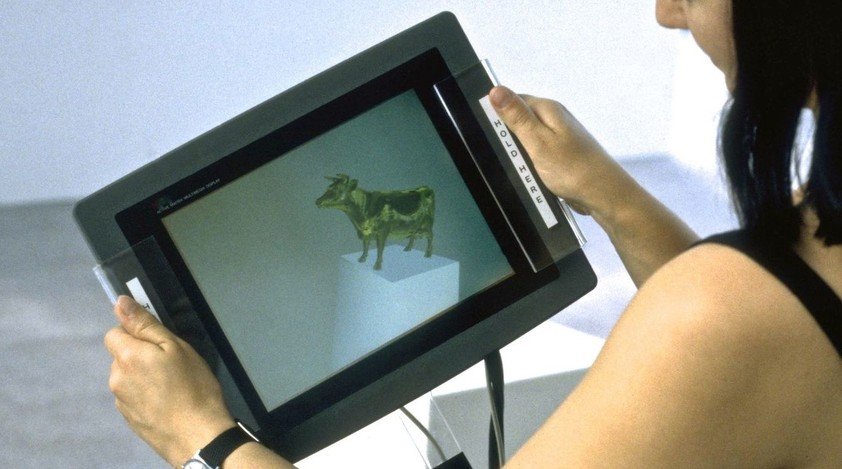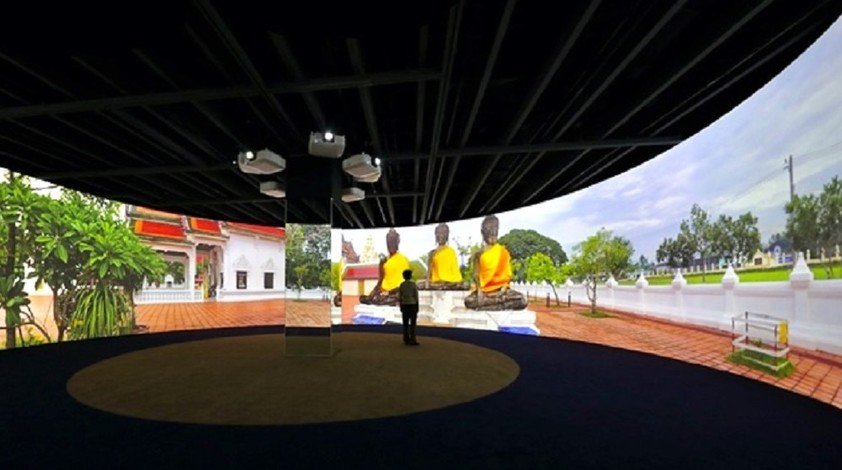Campus Digest
Professor Jeffrey Shaw: connecting art and life
30 Sep 2021
"I've always wanted to create bridges between the imaginative space of art and the physical world that people inhabit," says Professor Jeffrey Shaw, a leading figure in new media art, of his artistic philosophy. As someone who embraces the world of art and elements of new media, he believes in creating art experiences that are accessible to general viewers, and he ends up pushing the boundaries of interactive art, expanded cinema, performance and the creative use of digital technologies along the way.
Having joined HKBU this year as the Chair Professor of the Academy of Visual Arts, he is interested in developing fundamental research in the field of future cinema systems, which will be a major focus of the next generation of art technologies.
Engaging the viewers as co-creators
Long known as a ground-breaking visionary in new media art, Professor Shaw has widely exhibited critically acclaimed pieces of work during his prolific career. From his early projects using inflatable structures to his achievements in computational media art, interaction and immersion are placed at the centre of his work.
"Interactivity has been a thread throughout my career as a new media artist. From the earliest days of my practice, I wanted to find ways to engage the viewer more proactively in the art experience," he says. "I wanted the viewer to become the co-creator and performer of the artwork by designing aesthetic and operational processes of participation and engagement."
His installation Waterwalk (1969) is one of the works which challenged the conventional and passive relationship between the viewer and art by integrating elements of play and creating participatory roles for the viewer. Floating on the water, the work featured a three-metre-high tetrahedron-shaped balloon made of plastic that people could climb into and enjoy the extraordinary experience of walking on water. "As I saw it, this was a fundamental transformation of what a sculpture could be – not just an object you look at, but now an object you can get into to have an exceptional experience," says Professor Shaw. "At the time it was a radically new departure from tradition to integrate interactivity into the conceptual and aesthetic framing of an artwork."
Development of immersive expanded cinema
From the 1960s to the 1970s, Professor Shaw and his collaborators continued to explore the use of inflatables, laser projections, video and eventually computer installations to produce projects related to expanded cinema. The term "expanded cinema" is used to describe a medium or an immersive environment that pushes the limits of cinema and challenges the one-way relationship between the audience and the screen. As an artist seeking to liberate the cinematic experience from its traditional constraints, Professor Shaw began to experiment with new technologies in his works, driving the development of expanded cinema towards interactive and immersive forms.
In 1989, Professor Shaw presented the pioneering interactive art installation Legible City. Participants rode a stationary bicycle in front of a projection screen, and the projection showed a simulated representation of a city in the form of computer-generated, three-dimensional words and sentences along the sides of the streets. "The artwork is no longer just an image, but a location that the viewer can visit and explore each in their own way. One become an adventurer in the virtual landscape and conceptual formations which the artwork has created," he says.
Although the work looks modest in terms of its visualisation today, Legible City has played a pivotal role through its innovative combination of old and new technology. The deployment of a real bike gives the viewer a physical sense of cycling as they navigate a virtual world created with early intimations of today's virtual and augmented reality (VR/AR) technology. The viewer's experience in the virtual domain is amalgamated and amplified by their kinesthetic experience in physical space, Professor Shaw points out, and this work fulfils his intention to conjoin the world of imaginary constructs with the real environment, and to marry the vibrant world of art with everyday life.
Connecting imagination and reality
As technologies continue to advance, the processes of interaction and immersion in Professor Shaw's artworks progressively refine and become more sophisticated. His 1994 installation Golden Calf is a landmark piece with fully realised AR technology, and it was made at a time when tablets and VR goggles did not even exist. The viewer, facing a real, empty pedestal, picks up a monitor and the screen then shows a golden calf, whose surface reflects the surrounding space of the gallery. With the virtual golden calf mirroring the physical environment, the artwork brings the viewer's attention to how AR creates a bridge between imagination and reality.
"This was quite a fresh and shocking experience at the time. A sculpture was shown as an immaterial, non-existent object that only became apparent through a mediated and computational process," he says. "It opened up a whole new perspective on what sculptures could be and how they could occupy a space. Furthermore, because such virtual forms are not constrained by gravity nor specific materials, so they offer vastly new creative opportunities to artists. Today's new media art and creative industries are a testament to that."
By ironically putting a virtual golden calf, a symbol of idolatry, on the pedestal, Professor Shaw hopes to provoke viewers to reflect on their own relationship with technology. "While this work embodies our fascination with the virtuosity of technology, at the same time it asks us to take a critical stance in relation to that technology," he says. "Seeing ourselves reflected in the Golden Calf, we need to reflect on what we become in the world of new media."
For the past 12 years, Professor Shaw has lived in Hong Kong, and he has contributed tremendously to the art ecosystem in the city as an artist, curator and educator. His recent works include CITY IN TIME, a Hong Kong Tourism Commission project that adopts AR and multimedia technologies, and Atlas of Maritime Buddhism, an exhibition that uses virtual reality and new media techniques to create new forms of immersive experience. Besides creating collaborative projects with local artists and organisations, he has also done forefront research in experimental museology and digital humanities.
The future of cinema systems
One of Professor Shaw's first projects at HKBU will focus on the development of future cinema systems. "Following my earlier experiments in expanded cinema, I see revolutionary ways to create new cinematic experiences utilizing next-generation technologies. This will also open up entire new strategies of storytelling, image-making and data visualization," he says. "I'm very excited to join the HKBU community, to work with its faculty and students to innovate and explore the new scope of future cinema." This research project will bring together experts from HKBU, the École Polytechnique Fédérale de Lausanne of Switzerland and City University of Hong Kong to advance the use of technology in the creative arts.
Professor Shaw will also be examining ways to increase the sophistication of interactivity in these future cinema systems. By employing various types of sensory technologies that detect the viewers' physiological responses, a 'mixed reality' can be achieved with many new levels of exchange between the real and virtual words. For art-tech, this will be a big step forward in terms of the creative opportunities offered to the artists of tomorrow.
To enhance this interactive experience, he intends to build a 360-degree LED cinematic space, which will transform the linear world of rectangular-screen cinema into an all-surrounding immersive visualisation space that the viewers inhabit. "Traditionally, when watching movies, we huddle together in the dark as separate individuals. In our new LED technology cinema, the viewing environment will be fully illuminated - a daylight situation where people are fully cognizant of each other’s presence, inviting social interaction," he says.
Not only will such a space enable artists and filmmakers to create art in brand new ways, but it could also give viewers unprecedented experiences. "It will be tomorrow's enhanced strategy of bridging the imagined world and the real world, and letting the two influence and inspire each other," he says.
